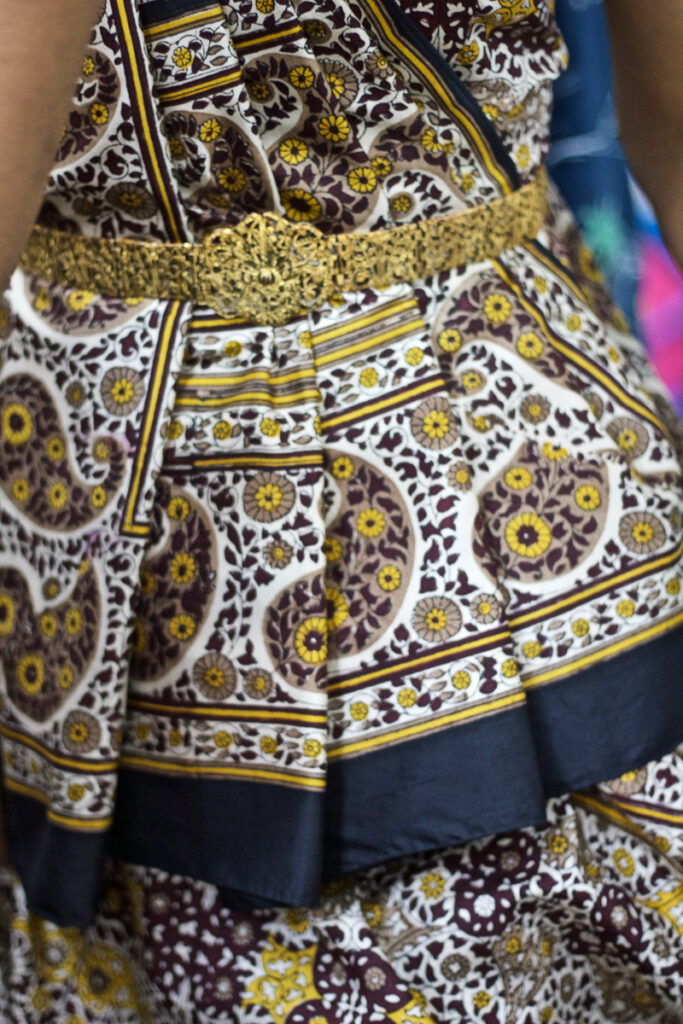We learn the thinking behind a circular economy approach to India’s vibrant market in saris.
Kumari is a unique brand, founded by designer Rashmi Varma and Malika Verma, founder of Border&Fall and The Sari Series. This dress, designed to work in infinite ways, includes collections made from vintage saris, and also offers the possibility of upcycling your own sari into a custom Kumari dress. Clients can also barter their personal saris for a Kumari. Kumari is available under IRN 25,000 ($AUD 450).
✿ How did you source the second-hand saris?
Our second-hand saris have been sourced from a range of places, the initial run from the cupboards of family and friends. We source from textile vendors, including those who acquire saris to melt for zari – a few of ours have been saved from that process. As well, we have introduced a barter option wherein clients can barter saris for a Kumari in return – that’s been a fun new process of acquisition!
✿ How are decisions made about how the saris are to be altered?
Working with the vintage/second-hand saris is a laborious process, we need to ensure the textile strength still has enough integrity to uphold stitching and wear. As well, the pattern needs to be looked at carefully, to decide where it can be cut so that it aesthetically, and technically drapes the most ideal way. It’s a case-to-case basis for each sari.
✿ Are any of the modifications made to the design to better suit a contemporary lifestyle?
The Kumari pattern in itself is a contemporary design: a dress inspired by the sari. It’s one garment offered in many different versions, each can be draped and worn in infinite ways. We have a deep belief in the power of this dress to bridge culture and aesthetics across the globe.
✿ What kind of person have you found it attracted to these renovated saris?
Our Twice Loved collection has been the most popular collection, many people are attracted to the idea of re-wear, reuse and repurpose. With a fitted bodice and zip, it’s easy to wear and travel with, as a one garment look, which can be worn and re-worn looking different each time. It’s a great perception shift which makes the sari something completely new, yet respects its provenance.
✿ To what extent are these popular with the mainstream sari weaver, or do they appeal to a younger generation who may not commonly wear one?
We are fortunate that both sari wearers and otherwise, both gravitate towards Kumari. There is an understanding that the dress is not intended to replace the sari but rather, it does something a sari does not. It has a fitted bodice, slit on the leg and is essentially a dress. There are those who love sari’s and wear it, alongside those who love the idea of a sari but feel more at ease in a dress. This ease is not necessarily because a sari is perceived to be difficult but rather, it aesthetically seems different – and there is a comfort in its contemporary adaptation.
Visit kumarisari.com and follow @lovekumarisari





